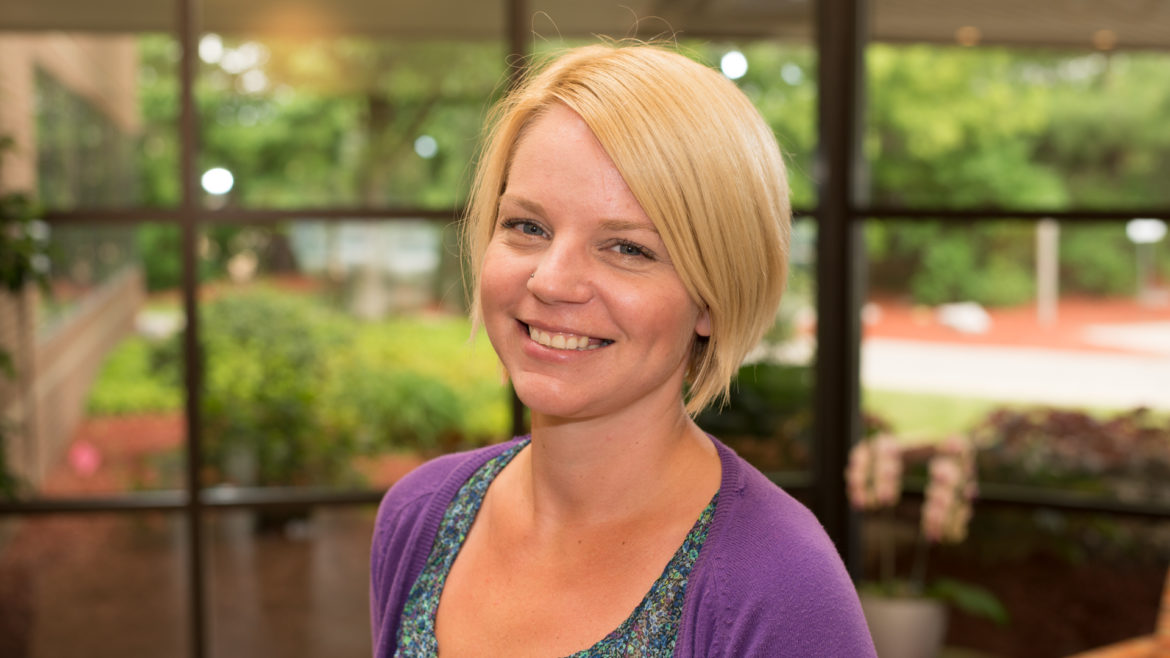CUSOMAG: We’re here today to discuss Web Quality Assurance and what it means for our clients. Joining us is Quality Assurance Administrator, Susanna Wojtkowiak, who will provide some insight on the subject. Susanna, what is your title and role at CU*Answers?
SUSANNA: I am the Quality Assurance Administrator and part of the Web Services team. I get to be an advocate for the current and potential credit union members that come to our company websites, as well as the sites our credit unions have. My goal is to walk in the shoes of a member, visualize what it feels like to interact with a different website, and make sure that everyone is able to navigate it and easily access the information that is presented to them. I work with the interface and the Web Services team to modify the front and back ends of a website to improve the quality for any outside users.
CUSOMAG: Why is CU*Answers doing this for clients? What triggered the creation of this service?
SUSANNA: People who’ve had their eye on credit union related news over the last couple years will have likely heard about website accessibility. It really has become a prominent subject as of late, targeting various businesses that have an online presence – from grocery stores to pizza places. You may have seen Domino’s Pizza in the news lately as they have refused to make their website and mobile app accessible for those with visual disabilities.
In addition, a large amount of credit unions have received demanding letters about accessibility. Members have been saying that they cannot access their credit union’s website because they have a certain disability that impedes them from accessing services. It’s not just about navigating to a URL and saying it works. It goes back to the Americans with Disabilities Act (ADA), the primary focus of which is ensuring that people with disabilities are able to use the same services that are offered to those without.
CUSOMAG: Tell us little bit more about how long this service has been available for credit unions.
SUSANNA: We’ve been providing this service for a little over a year now. We started in a beta phase first to figure out what was going to be important to our members and credit unions, and how we could build the service in a way that’s going to have value to them. We were asking for feedback from our beta users, sending them the reports on a scheduled day, and then making changes to the process to add value to the reporting and remediation factors.
As we move into our second year, we are continuing to build on that service and not just looking at it from an accessibility standpoint. We’re focusing on web quality as a whole and realizing that these items we’re putting into place for accessibility are beneficial to everybody, not just those with disabilities. On the site, we’re making sure that all the links are working properly and there are no spelling errors, which can be frustrating for members using screen readers. We also look at how the website functions for those with limited abilities to utilize peripheral devices such as a mouse and keyboard.
CUSOMAG: Is it possible to have a perfect website?
It’s tricky to say, as there is no 100% set standard of what the perfect website is going to look like. We’re all waiting on the Department of Justice to say what is right and wrong in terms of website accessibility. We do have the Americans with Disabilities Act out there, but there’s still the debate over if that applies to a website, and if so, how. There are best practices, and that’s what we strive to achieve until guidelines are set in stone, not only to help potentially protect credit unions from a lawsuit, but to help their members as well, and care for that community in a way.
CUSOMAG: You talk about reports, but what exactly are you doing day-to-day with the reports you give to clients?
SUSANNA: The report I build for each credit union has a couple different sections to it. When you’re looking at accessibility, there are different automatic scanners that look through the code of a website, pinpoint back end errors or potential errors, and assign a score to the website. I think that’s a good way to gauge the progress of your website – you can show your board that accessibility is being focused and improved upon on the website as they see these scores increase at each interval.
However, we’ve also found that an automated review does not cover all items of accessibility. Some items require a human’s touch to identify. Due to this, each page needs to be manually scanned and the findings recorded in the second section of the report. This section also includes some really cool items about search engine optimization, which is tied to accessibility. There’s additional Google Analytics information added in as well, so you can see who’s visiting your site, what they’re looking at, what’s popular on your website, and what is not getting as much visibility.
CUSOMAG: How often are these reports sent out?
SUSANNA: These reports are sent to clients once a month, as our web quality assurance is not a one-and-done service. When a credit union signs up, we ask for a one-year commitment, because you can’t just fix everything and leave it. When you make changes to either the front or back end of a site, you can’t know how they will affect accessibility, your search engine optimization, or all those other subject points we’ve talked about. I do these reports monthly so the client knows I’m constantly keeping an eye on their sites and so they can show their boards that they are watching as well.
CUSOMAG: Is this service available for credit unions out of network?
SUSANNA: If a client has a website hosted and managed by the CU*Answers Web Services team, we can handle reporting and remediation for them. Outside credit unions on the other hand require more communication because I can’t go in and make the fix for them. Often this would involve a video conference where we would go through their website, discuss any issues I’ve seen, and explain how they can be fixed.
CUSOMAG: Last question, what’s your favorite band?
SUSANNA: Twenty One Pilots! I saw them earlier this year with my daughter. It was our first concert together, and by far my favorite show.
CUSOMAG: Anything else?
SUSANNA: If you haven’t done so yet, try navigating through your website as if you were someone with a disability, and see what it feels like to be in their shoes. Take away that mouse and try using only your keyboard to navigate. Download a free screen reader to understand what it feels like to solely hear a website. Install a browser extension that takes your website and moves the text around to simulate dyslexia, or one that blurs the screen for those with sight issues. Use an extension that grays out your site and see if you can still read your banners with color blindness. There are so many ways a site could be broken for those who suffer with disabilities.
If you would like any recommendations or have questions or concerns, feel free to reach out to me at susanna.wojtkowiak@cuanswers.com, or reach out to the Web Services team at web_services@cuanswers.com.
























































